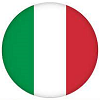Here's how you can get started with Oso's authorization service in Node.js
What Do You Want to Learn?
Latest Tutorials
Here's how to make a spy return a value in Sinon.js
Here's how you can check if a file exists using the fs module in Node.js
Here's how you can set HTTP response headers in Express.js
The `setTimeout()` function in JavaScript sets a function to run later in a non-blocking way. Here's what you need to know.
The `trim` option in Mongoose schema definitions makes Mongoose automatically call `String.prototype.trim()` on string fields. Here's how it works.
Here's how you can set whether a checkbox is checked in Vue
Here's how JavaScript arrays' `flatMap()` method works, and what you can use it for..
Here's how you can use ES6 Sets to get distinct values in an array.
Here's how Mocha's afterEach() hook works.
Got a JavaScript date that is showing up as "Invalid Date" in your console? Here's how you check for that.
Here's how you can use the btoa() function in JavaScript to convert strings to base64. Also describes how to convert strings to base64 using Node.js buffers.
Mocha doesn't have a built-in assertion library, but here are a few options.
Here's how `it.skip()` works in Mocha
Here's how you can use date-fns-tz to work with timezones, and alternatives for working with timezones in vanilla JS.
Here's how Mocha's before() hook works, and when you should use it.
Here's two ways you can run just one test out of a Mocha test suite.
Here's how Mocha's beforeEach() hook works.
Here's how you can check if the current URL contains a given string in JavaScript.
The "__dirname is not defined" error is usually due to using ESM. Here's how you can fix this error.


